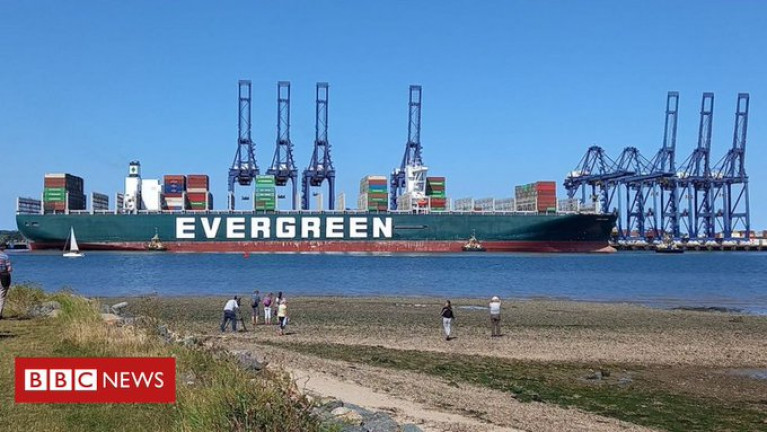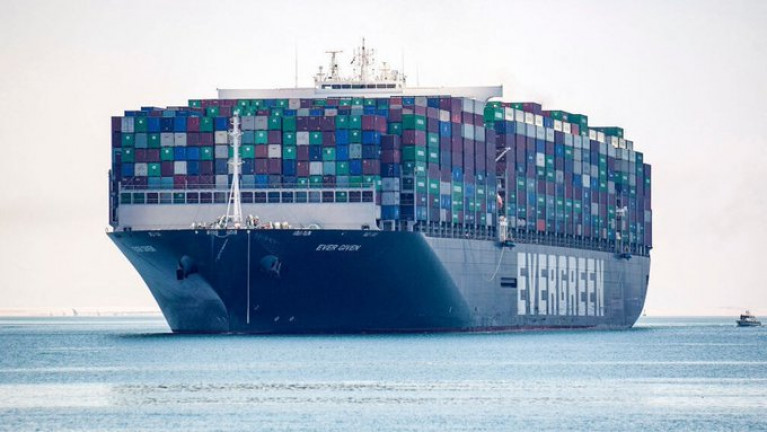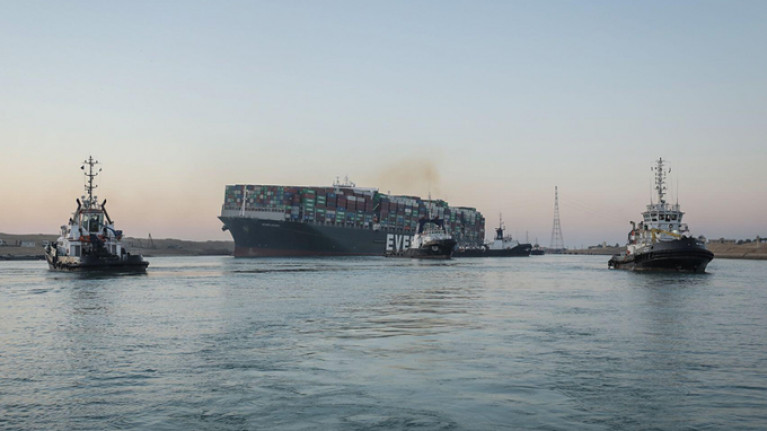Displaying items by tag: Ever Given
Ever Given, the huge container ship that blocked the Suez Canal is being unloaded after it arrived in the UK, reports BBC News.
The Ever Given docked at Felixstowe, Suffolk, at 16:30 BST on Tuesday, its first UK visit since causing disruption to global shipping as Afloat previously reported.
The Port of Felixstowe said 2,000 containers were being unloaded from the ship and the process would take about 24 hours.
It said the 400m-long (1,300ft) vessel was due to leave at 02:00 on Thursday.
The ship, operated by Taiwanese firm Evergreen Marine, was originally due to arrive at Felixstowe in early April.
It blocked the major shipping lane in Egypt for almost a week in March.
For more on the arrival which drew onlookers to watch the giant ship's arrival, click here.
Ever Given Is Welcomed by the Port of Rotterdam
Ever Given the giant Evergreen chartered-in containership, which triggered the closure of the Suez Canal for several days back in March when it got stuck on sandbanks, has arrived in the Port of Rotterdam.
According to LloydsLoadingList, it berthed at Hutchison’s ECT Delta terminal at Europe's biggest box port early this morning having been slow-steaming to its destination since leaving Egyptian waters.
In a statement the port terminal operator said : Since today, (29 July), the Ever Given has been moored at the quayside of the ECT Delta terminal. In close cooperation, Evergreen Marine Corporation and Hutchison Ports ECT Rotterdam (ECT) have worked out a plan to handle the Ever Given in Rotterdam. All continental European containers will be unloaded in Rotterdam.
“To that end, the Ever Given will discharge all containers both with destination Rotterdam and with destination Hamburg. The Ever Given will then leave for Felixstowe to deliver the remaining containers in the UK. Containers for Hamburg will be transhipped. These containers will be loaded on the Ever Utile to continue their journey to Hamburg,” the statement added.
The vessel was held under arrest for three months while its owner and insurer agreed a settlement with the Suez Canal Authority.
Ever Given, one of the world's largest container ships has resumed its journey to leave the Suez Canal, 106 days after becoming wedged across a southern section of the waterway for nearly a week and disrupting global trade.
A Reuters witness on board a tug boat saw the Ever Given start to move north in the Great Bitter Lake (see Monday's 'agreement' story), which separates two sections of the canal and where it has been moored with its Indian crew since being refloated on 29 March.
Canal sources said the vessel would be escorted by two tug boats and guided by two experienced pilots as it makes its way through the canal, one of the world's busiest waterways, towards the Mediterranean Sea.
A ceremony was held at the canal to mark the departure of the ship, which is loaded with about 18,300 containers.
The Ever Given had become grounded in the southernmost, single-lane stretch of the canal on 23 March amid high winds.
RTE News has more on this story.
A long-running dispute about the release of containership Ever Given, as Afloat previously reported, has been resolved and the vessel will resume its voyage this week, more than three months after the incident that blocked the Suez Canal.
“Following the agreement in principle between the parties, and after further meetings with the Suez Canal Authority’s negotiating committee and numerous court hearings, good progress has been made and a formal solution has now been agreed,” the UK P&I Club, the vessel’s insurer, said in a statement.
“Preparations for the release of the vessel will be made and an event marking the agreement will be held at the authority’s headquarters in Ismailia in due course.''
Reuters reports that the SCA will sign the settlement contract on July 7, allowing the ship to resume its voyage. No details of the final settlement were given.
Last month an agreement in principle was reached between the vessels owners and insurers.
More from the SCA here, reports LloydsLoadingList.
Get Suez Ship Afloat - Afloat.ie’s Suggestion
When Lou Grade produced the unsuccessful and ridiculously expensive movie Raise the Titanic, he said afterwards that it would have cost less to lower the Atlantic.
Afloat.ie’s suggestion for the Ever Given blocked in the Suez Canal is the opposite. They should build coffer dams ahead and astern of the Ever Aground, fill up the new “pond” thereby created until the ship floats, straighten her up, and then remove the coffer dams.
The dams should be built far enough from the ship that she can be moved into water of the proper depth, as sand will have built up directly underneath the vessel with all the faffing around by tugs.
And this is NOT an early April Fool.


























